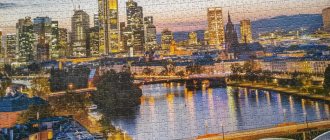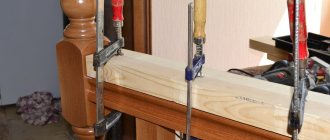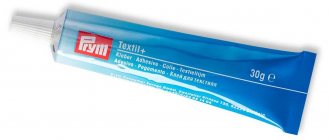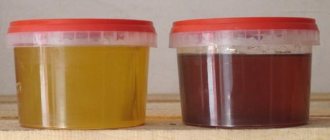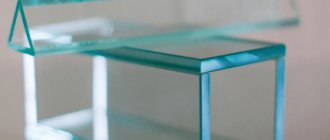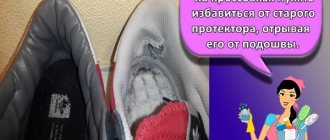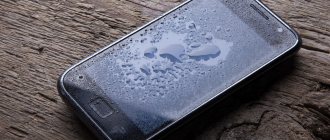How to glue a puzzle and choose a base?
If you are wondering what is the best way to glue puzzles, pay attention to our tips. First of all, you need to choose the basis for the future picture. If the puzzle is small enough, you can use whatman paper or a sheet of cardboard. A larger puzzle (from 1000 pieces) will require a strong, dense, even base, for example, a sheet of fiberboard or plywood, onto which you can glue a picture with any glue.
Fiberboard sheet
This method is best used for puzzles with 1000 or more elements: the picture is glued smoothly and easily; Over time, the image does not deteriorate and retains its original appearance.
Gluing from the front side
For gluing on the front side you will need a special film. Using this method, it can be easily glued to a solid base such as plywood, foam or ceiling tiles.
Gluing the puzzle from the inside out
If you decide to glue puzzles from the inside out, you can choose absolutely any base depending on the size of the picture. What paper, cardboard, canvas, fabric, tulle or gauze are perfect for small images. For larger mosaics, it is better to opt for harder materials such as foam, ceiling tiles or plywood.
Varieties
There are five types of cork products, often used in the construction industry.
Wallpaper
Some people decide to decorate their walls with special cork wallpaper. This is an environmentally friendly and natural material that will not only decorate the room, but also even out minor unevenness on the surface of the walls. The main advantage of such wallpaper is that its surface is covered with wax, which significantly increases the service life of the coating. Also, the advantages of wallpaper include:
- Strength. Cork wallpaper is quite durable and protected from mechanical damage.
- Resistant to moisture. Such materials do not deteriorate in rooms with high humidity.
Panels
For wall decoration, some people use small panels rather than cork wallpaper. Most often they are made from unnecessary wallpaper waste. Many people value such wood panels for their versatility, as they are suitable for any room interior. The appearance of the material allows it to cover the walls of rooms made in modern, classic and even Gothic styles.
Among the advantages of cork panels are the following:
- Noise insulation. Wood panels are suitable for rooms with thin walls that allow all sounds to pass through.
- Thermal insulation. The material creates a warm indoor climate and does not release heat outside.
- Water resistance. The panels do not deteriorate in conditions of high humidity.
Plate
Cork sheets are wood sheets that are often used to cover the walls of residential premises. The main feature of this material is that its surface is treated with wax. Thanks to this protective layer, the plates are much easier to clean, since they practically do not absorb dirt.
Cork plates can be called universal, as they are used in any interior.
Tile
If it is necessary to finish the floor, special cork tiles are used. This is an environmentally friendly product made from wood. The tile does not have an unpleasant odor and therefore is regularly used for finishing interior coverings of premises.
Among the characteristic features of such wood tiles are:
- Fragility. Such products are quite fragile and therefore must be used carefully.
- Easy to install. Laying the tiles is easy, as you just need to apply adhesive to them.
- Moisture resistance. The material does not absorb moisture thanks to the protective layer of wax.
Underlay for laminate or parquet
There are four types of cork underlay, which are laid under parquet or laminate:
- Traditional. It is laid using the hot method, since when heated, such a substrate is more securely attached to the surfaces.
- Bituminous. On the bottom coating of the substrate there is a slight layer of bitumen, which additionally protects it from high humidity.
- Rubber. When making the material, synthetic rubber is added, which ideally absorbs noise and other extraneous sounds.
How to glue puzzles correctly: basic methods
There are several options for how to glue puzzles correctly. It all depends on the size of the puzzle and your preferences.
On the front side
If you decide to glue the puzzle from the front side, follow a few rules:
- Fix the puzzle elements using film or special glue. Remember that after this it is no longer possible to take the picture back apart!
- Place the adhesive film on the front side of the mosaic. It is better to clean the surface of the mosaic from dust and moisture before doing this, otherwise it will not stick well.
- As you apply, slowly smooth the film with your free hand or a cloth to remove any bubbles.
- To ensure that the image under the film remains of high quality, it is better to take a glossy film. It sticks tightly to the picture and does not become covered with bubbles. If the film adheres unevenly, it can be removed and re-coated.
Gluing from the inside out
If you are afraid of ruining the image on the front side, you can glue the puzzle on the back side as well. For this:
- First, assemble the puzzle not on the table, but on something that can then be easily moved.
- Then attach 1 more piece of cardboard to the puzzle and turn it over sharply.
- If the picture consists of 1000 or more parts, you can additionally secure it with tape or paper clips before turning it over.
- After this, apply glue to the back of the puzzle and attach the sheet or plywood on which you want to glue it.
Tape gluing
If you're unsure how to use puzzle glue, taping may be a good alternative.
To begin with, we recommend assembling the puzzle on a surface from which it can be turned over. Glue the tape on the back side in stripes lengthwise and crosswise. It is better for the adhesive tape lines to overlap each other slightly for structural strength. You can also carefully glue the front side with regular transparent tape. The finished mosaic can be hung using double-sided tape.
Review of popular brands
There are seven popular manufacturers that produce high-quality adhesives.
"Moment traffic jam"
To attach wooden products, it is recommended to use special glue “Moment for Cork”. The following areas of application of this composition are distinguished:
- laying cork products on the surface;
- gluing wooden sheets with rubber, metal or wood.
Some people use it for gluing polyethylene, but this composition is not suitable for this material.
Bostik Quelyd Kork
A one-component product used for gluing cork materials whose thickness does not exceed five millimeters. Bostik Quelyd Kork is considered universal, since with its help materials are attached to both vertical and horizontal surfaces. The main disadvantage of this product is that it is not protected from moisture. Therefore, they should not be used in bathrooms, kitchens and other rooms with high humidity.
Decol Vern
This is one of the most popular adhesives used for attaching floor or wall plugs. This product is resistant to high humidity and temperature changes. These qualities allow it to be used not only indoors, but also outdoors. Among the disadvantages of Decol Vern is its unpleasant odor, which appears during the application process.
Wakol D 3540
An effective dispersion composition used for gluing cork surfaces. Wakol D 3540 is resistant to high temperatures and is therefore suitable for laying slabs on floor surfaces that are equipped with a heating system. Experts recommend applying this glue to perfectly flat surfaces so that the materials being glued are more securely attached.
Cork House
To reliably glue cork coverings, you can use Cork House adhesive. This adhesive will help bond cork to concrete and wood surfaces. Cork House should be applied to dry surfaces, as the composition adheres much worse to wet ones.
Bunitex
This is a high-strength adhesive that is considered universal. It is used to glue not only cork, but also other materials. Bunitex is suitable for gluing plastic, metal, plastics, fabrics and ceramics. The main advantage of this product is the speed of its hardening, since the applied composition dries completely within half an hour.
Kleyberg
People who are on a limited budget can purchase this adhesive composition produced by a Russian company. Over the years of production, Kleyberg has established itself as a high-quality adhesive that is suitable for working with most materials. It can be used for gluing wood, plastic, plastic, glass and ceramics.
How to glue puzzles into a picture: making a frame
A picture made from puzzles will be a wonderful addition to any interior. If you have already glued the mosaic together and would like to frame it, there are several ways to do this. The easiest way, of course, is to buy a ready-made one, but only a frame made by yourself will be unique and will be able to convey your idea.
Fiberboard
For puzzles glued together on fiberboard plywood, a frame made from ceiling plinth is perfect. To do it, you simply need:
- cut skirting boards,
- attach to the base on four sides using liquid nails or instant glue,
— paint it in any color depending on your interior.
Styrofoam
If the base for your mosaic is polystyrene foam, an interesting solution would be a frame made of stones, buttons, colored slats, shells or any other available means. To make a frame like this:
- prepare a rectangular cardboard base (it should be larger than your picture so that the edges protrude),
- apply glue over the entire surface of the cardboard base,
- glue each element one by one (buttons, shells, stones, etc.) and wait until the frame dries.
Ceiling tiles
A mosaic glued to a ceiling tile can be beautifully framed in a frame made of colored pencils. To realize this original idea, you will need pencils, glue and a solid base of the size you need.
- Sharpen your pencils to make them look nice.
- If you don't have many pencils, cut them in half.
- Glue the pencils in random order using glue.
- Wait for the frame to dry.
Gauze or tulle
A picture glued to fabric will be quite soft and not the most durable, so we recommend placing it in a hard frame, such as wood, while stretching the excess edges of the fabric onto another surface.
Review of famous brands
There are seven well-known manufacturers involved in the production of glue.
Decart
For durable gluing of wood, cardboard and paper, experts advise using adhesives from Decart. They are made using traditional technology and are therefore quite reliable. Most often, products from Decart are purchased for schoolchildren, those who love to do handicrafts, or for office workers.
Among the features of the adhesive mixture are the speed of drying and ease of use when gluing objects.
VGT
Some people, during renovation work in an apartment, install parquet flooring. To fasten parquet boards, it is better to use an adhesive composition produced by VGT. This company specializes in creating adhesives that are ideal for working with wood. It is also used to glue carpet and linoleum to the floor surface. These materials reliably adhere to plastic, glass, concrete and wood.
"Polaks"
Adhesive compositions made by are used for laying linoleum or tiles on floor surfaces. The distinctive features of this glue include the following:
- does not contain any solvents;
- does not shrink after hardening;
- provides a strong connection of treated surfaces;
- completely safe.
ASP 8A
This is a one-component acrylic mixture, often used by builders during work. ASP 8A has a high level of adhesion to materials such as tiles, plasterboard, PVC, brick, concrete and wood. It contains no solvents and therefore leaves no odor after application.
Axton
Axton adhesive is considered a common means of attaching roll materials to flooring. Most often it is used to attach carpet with linoleum to the surface. Axton does not have an unpleasant odor and therefore can be used in residential areas. It is also suitable for outdoor use, as it is resistant to high levels of humidity and low temperatures.
"Rainbow-18"
This is a construction adhesive that is suitable not only for smooth, but also for porous substrates. "Rainbow-18" is used for attaching carpets, ceramic tiles, linoleum, foam plastic and even metal. These materials are securely attached to wood, plasterboard sheets, plaster and concrete.
MasterTeks
This is one of the most effective construction adhesives used by many builders. MasterTeks differs from most other compounds in its increased elasticity, resistance to humidity and low temperatures. Suitable for fastening large and massive structures.
How to glue puzzles with tape?
Since we've sorted out the frames, now let's move on to the question of how to glue puzzles together with tape.
STEP 1.
Assemble the puzzle on whatman paper or a piece of cardboard that extends slightly beyond the actual size of the puzzle. The cardboard needs to be sturdy as you will have to turn the puzzle over.
STEP 2.
With the puzzle facing up, use wide packing tape such as duct tape or masking tape that is 5cm or slightly wider. Carefully place the tape across the rows of the puzzle so that the entire back is covered with tape. Trim the edges and then flip the puzzle over.
STEP 3 (OPTIONAL)
If you need a more durable base for your puzzle, you can purchase poster board from your local craft or office supply store.
Although this method may seem simple, it is not recommended for jigsaw puzzles. The tape can dull the colors, it can reflect light so that the picture is not visible from certain angles, and if you apply the tape incorrectly, you will not be able to remove it. Therefore, we recommend using special glue for puzzles.
How to glue puzzles with PVA glue?
Another popular but not recommended method is PVA glue.
- Place the puzzle face up on a flat surface.
- Apply PVA glue throughout the puzzle and spread it with a brush or spatula.
- Give it time to dry.
This method is very popular, but using it there is a risk of ruining the puzzle. If there is too much glue or it is old, the painting may lose color or become excessively soggy. Therefore, we recommend using only special glue for puzzles.
Other recipes
You can create slime using other ingredients.
Recipe No. 1
- PVA glue is poured into the plate.
- Dye is added, you can use dry. The mass is stirred until smooth, it should turn out thick. It can be kneaded in your hands and squeezed.
- Elastic and viscous slime is ready.
Recipe No. 2
- Thick shampoo and PVA glue are poured into a plate.
- All ingredients are mixed until smooth.
- Now salt is added for thickness; if after mixing the mass does not become thick, you can add a little more salt.
- The slime is washed to remove excess foam.
- Then it is decorated with any additives, for example, rhinestones, sparkles, you can use edible decorations: gummies, popcorn, marshmallows, etc.
Recipe No. 3
- The glue stick is cut into small pieces, you will need 60 g.
- The container is placed in the microwave for 15 seconds, after which you need to check whether the pencil has melted or not. If large pieces are hard, it needs to be heated for another 10 seconds.
- Soda is diluted in water, approximately 1 teaspoon of baking soda and 1 teaspoon of warm water.
- The pencil is added to the mixture.
- The mass is mixed well.
- Add a couple of puffs of air freshener.
- After the slime stops sticking to the walls of the plate, it is ready, you can pick it up and knead it.
- If desired, dye and additives are added.
It is possible to make slime at home in a short time and without high costs. Preparation of slime occurs only under the supervision of an adult, especially if knives, a microwave and a stove are used. After cooking, store the slime only in a dark place, in a jar with a tight lid.
Proper storage and use of anti-stress will prolong its life and the child’s joy. When the slime dries, it is necessary to soak it in water; if it loses elasticity, add thick hand cream or baby cream; if there is excess moisture, use a solution of warm water and table salt; you can use sea salt.
You should not leave the slime in the cold or heat, it will lose its shape and will be unsuitable for play. There is no need to leave slime on upholstered furniture, carpets or clothes; the toy sticks to the fur and leaves marks.
Video
How to glue a puzzle onto cardboard?
If you decide to decorate your home with mosaics, the best way to do it is with the new mounting system from Unidragon. One set is enough to glue 6 puzzles of size S, or 3 puzzles of size M, or 3 puzzles of size KS.
In the kit you will receive:
- Cardboard base for turning over the mosaic;
- Special stickers for attaching the base to a flat surface;
- 3 adhesive sheets for holding mosaic pieces;
- Adhesive heels for placing the puzzle on the wall;
- Instructions.
You can watch detailed instructions on how to glue a puzzle on our YouTube channel.
Rating of the best
You can buy the following types of special adhesive compositions on the Internet or in craft stores: Step puzzle, Ravensburger Puzzle Conserve, KSK-M, Educa.
- First in the Step puzzle rating. It has high adhesion, is easy to apply, and dries quickly (within 1.5–2 hours). Packages 80 ml. enough to treat a surface of 0.4 square meters. meters. Does not deform the cardboard surface. Cost from 30 rub.
- Ravensburger Puzzle Conserve. It comes in a can with a foam nozzle. Forms a transparent, elastic coating, drying time 1 hour. Bottle 200 ml. enough for a canvas of 4 thousand segments. Cost from 580 rub. Not always available.
- KSK-M. A cardboard spatula is included with the adhesive material. Volume 80 ml. enough to treat a surface of 0.4 square meters. m. Has no color, forms a glossy film. Coupling time 2 hours. Price from 35 rub.
- Educa packaging of polymer solution 250 ml. enough to glue puzzles of up to 6000 pieces. Unlike other formulations, you can work with children from 3 years old. Also applied to the front side, it forms a transparent coating. Dries in 2.5 hours. Cost from 600 rub.
How to replace glue for puzzles?
The Unidragon fastening system is a special film that allows you to glue puzzles together without much effort! If you've ever assembled a mosaic, you've probably wondered how to maintain the integrity of the picture? You can use traditional methods: using silicate glue, or gluing the assembled mosaic onto cardboard in parts, using tape or fabric on the back of the puzzle... But with the unique fastening system from Unidragon, such efforts are not necessary! Now this is the number one means for attaching puzzle elements into a single whole.
Main advantages:
- Convenience - no glue jars, spatulas, brushes, etc.
- Speed - gluing takes a few minutes.
- Quick effect - no need to wait several hours for the structure to dry.
- Savings - one set is enough for 6 S-size puzzles.
- Aesthetics - the film is completely invisible and does not affect the appearance of the puzzle.
- Durability - a painting glued using the Unidragon fastening system will decorate your home for many years.
Results
It is not difficult to preserve the result of your painstaking work using a base and glue. And the finished painting will be an excellent decoration for your interior.
After assembling puzzles, especially large ones, it’s a shame to destroy your favorite image. Find out how to preserve it for a long time and turn it into an original interior decoration in the article.
What is the best way to glue Unidragon puzzles?
Complete your home decor with interesting wood mosaics. This will be a beautiful decoration for:
- Bedrooms
- Children's
- Living room
- Kitchens
- Game room
- corridor
- and also for your office!
How to hang a picture correctly? As with any aspect of decorating, you need to understand the basic principles first and then improvise—the most pleasing arrangement may be the one you least expect. Have someone hold the painting up against the wall while you stand back and appreciate it. If you're going to group several items together, arrange them on the floor and rearrange them until you find an arrangement you like.
As for the exact placement, conventional wisdom says that pictures should be hung at eye level. This concept is a good starting point, but hardly definitive. There are many good reasons for hanging pictures higher or lower than the standard height. In any setting, you will have to react to the architecture and furniture, as well as follow your instincts.
Learn to trust yourself. If it feels right, don't be afraid to do something a little differently.
Characteristics of rugs
A puzzle rug is a soft floor covering. It consists of foam material, which has the following advantages:
- light weight;
- elasticity;
- elasticity;
- good shock absorption;
- environmental friendliness.
The positive characteristics of the rug itself include:
Comfortable. The mosaic floor covering is very soft and has good shock absorption. The product resembles a mat; you can tumble, jump or just sit on it. The mat smoothes out uneven surfaces well, so it can be used even on uneven floors.
- Good thermal insulation. In its properties, the rug resembles a warm floor. It is very comfortable and not cold to sit on, regardless of the floor covering.
- Non-slip coating. There are notches or pimples on the surface of the puzzle, which eliminates the risk of slipping and injury.
No smell. No adhesives or chemicals are used to make the puzzle mat, so it does not have an unpleasant odor. Of course, this only applies to high-quality models from well-known manufacturers.
Excellent sound insulation. Noisy games of children cause discomfort for other family members. This is due to the fact that something constantly falls from their hands, and when it hits the floor, a noise occurs. Soft rugs easily eliminate this problem. They are often used in playrooms and even gyms.
Easy to care for. Even a child can organize a place to play. The mat is lightweight and quickly folds and unfolds. The coating is easy to clean. It is easy to remove plasticine, paint and other contaminants.
Among other things, the products have an original design. Bright colors allow them to easily fit into the interior of any room
This is especially important for stationary rugs that are large in size.
How to glue a wooden puzzle and not make mistakes
Mistakes are normal, but it’s still better to learn from other people’s mistakes than from your own. Therefore, we bring to your attention the most common problems that users encounter:
❌ First cut out the film and then glue it onto the puzzle.
✅ There is no need to cut the film in advance, because you may not guess with the size!
❌ Glue the film onto a dirty or dusty puzzle.
✅ Clean the puzzle before sticking the film.
❌ Glue the film onto the unassembled puzzle.
✅ Gluing should be done at the very end, when all the puzzle elements have been collected.
Description and distinctive features of cork materials
Cork is the bark of the cork oak tree, which is often used in the construction industry. Cork is considered a high-quality material and therefore many people use it to cover the surface of walls and floors. Among the distinctive characteristics of cork products are the following:
- Resistance to moisture. Cork coverings are moisture resistant and therefore do not deteriorate when exposed to moisture.
- Durability. On average, coatings made from such tree bark can last 20-30 years.
- Resistant to combustion. Cork products are pre-treated and therefore do not burn.
